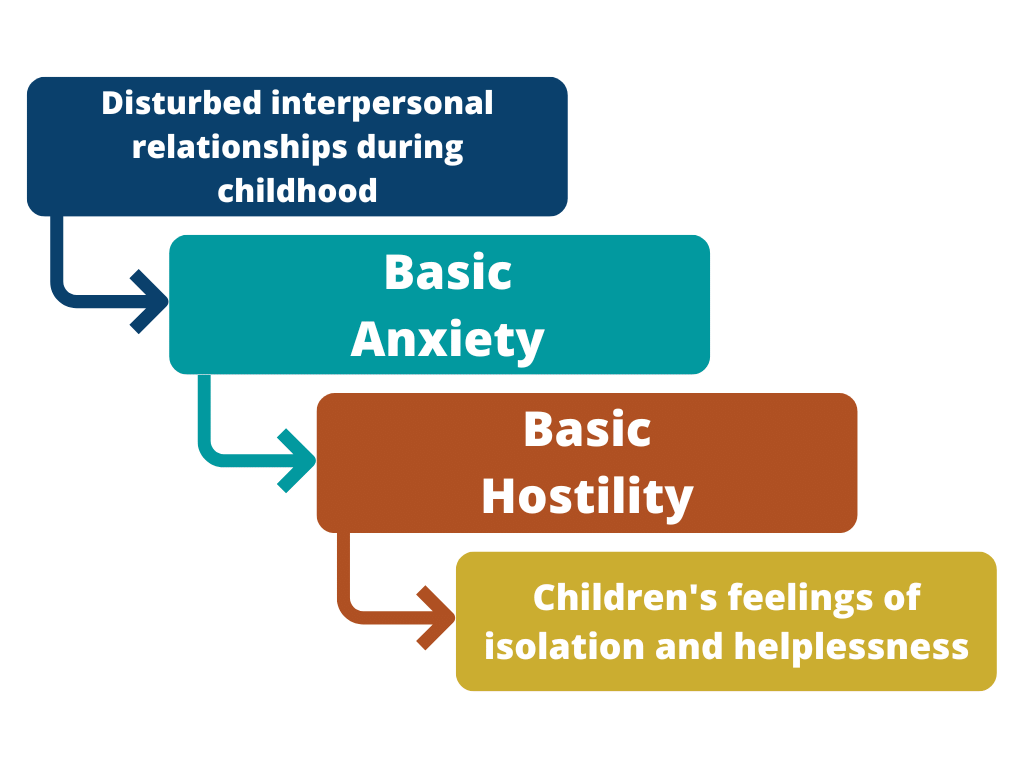NCERT Solutions for Class 12 Psychology - (Part -1) - Self and Personality
Q1: What is a self? How does the Indian notion of self differ from the Western notion?
Ans: Self-refers to the totality of an individual’s conscious experiences, ideas, thoughts, and feelings with regard to herself or himself. It can be understood in terms of subject and object or I and Me.

The Indian notion of self and the Western notion of self differ from each other by a number of important features:
1. Indian Concept of Self
- Self is characterized by the shifting nature of the boundaries.
- The Indian view does not make rigid dichotomies.
- It is based on collectivistic Indian society.
2. Western Concept of Self
- The boundaries between self and the group are rigid.
- It holds clear dichotomies between self and group.
- It is based on individualistic society of the West.
Q2: What is meant by a delay of gratification? Why is it considered important for adult development?
Ans: Delay of gratification, also known as self-control, is a practice that means learning to delay or defer the more pleasurable or fun-loving needs and rewarding later.
- It is considered important for adult development because any situations of life require resistance to situational pressures and control over ourselves.
- Human beings can control their behavior the way they want, which is possible through what is commonly known as ‘willpower.’
- Delaying or deferring the satisfaction of certain needs or practicing self-control plays a key role in the fulfillment of long-term goals.
Indian cultural tradition provides us with certain effective mechanisms (e.g. fasting in vrata or Roza and non-attachment with worldly things) for developing self-control. A number of psychological techniques of self-control have been suggested, which are:
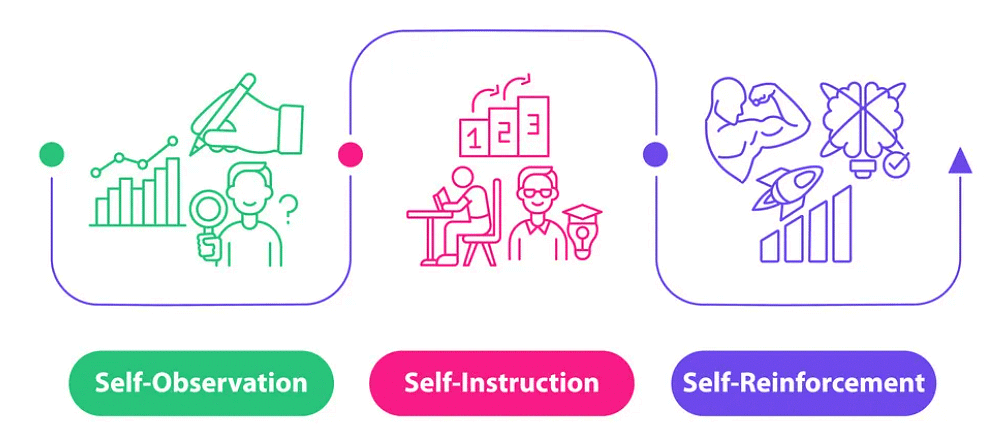
- Observation of own behavior:
This provides us with the necessary information that may be used to change, modify, or strengthen certain aspects of self. - Self-instruction:
It is another important technique. We often instruct ourselves to do something and behave the way we want to. Such instructions are quite effective in self-regulation. - Self-reinforcement:
It involves rewarding behaviors that have pleasant outcomes. For example, you may go to see a movie with friends if you have done well in an examination.
Q3: How do you define personality? What are the main approaches to the study of personality?
Ans: The word ‘personality’ is derived from the Latin word ‘persona’, which means a mask or false face which Greek actors used to wear when acting on stage. Personality refers to psychophysical characteristics of a person that is relatively stable across situations and over time and make her or him unique. It also defines our existence and the ways in which our experiences are organized and show up in our behavior.
There are many broad personality theories, which can be grouped into four categories: –
- Dynamic approaches:
Emphasizes on-going interaction among motives, impulses and psychological processes. - Type and train approaches
Focuses on people’s characteristics, stubbornness, shyness and so forth and how these characteristics are organized into systems. - Humanistic approaches:
Emphasizes the self and the importance of the individual’s subjective view of the world. - Learning and behavioural approaches:
Emphasizes the way habits are acquired through basic learning process.
The main approaches to the study of personality are:
- The type approach
- The trait approach
- The interactional approach
- Psychodynamic approach
- Post-Freudian approach
- Behavioural approach
- Cultural approach
- Humanistic approach
Q4: What is the trait approach to personality? How does it differ from the type approach?
Ans: The trait approach is very similar to our common experience in everyday life. These theories are mainly concerned with the description or characterization of basic components of personality. It tries to discover the 'building blocks' of personality. Human beings display a wide range of variations in psychological attributes, yet it is possible to club them into a smaller number of personality traits.
For example, when we come to know that a person is sociable, we assume that s/he will not only be cooperative, friendly, and helpful but also engage in behaviors that involve other social components. Thus, the trait approach attempts to identify the primary characteristics of people. A trait is considered a relatively enduring attribute or quality on which one individual differs from another. They include a range of possible behaviors that are activated according to the demands of the situation.
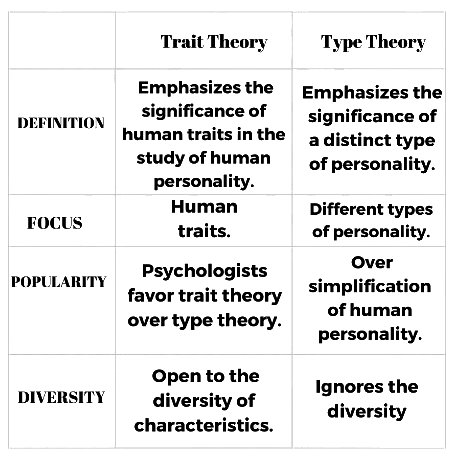
Q5: How does Freud explain the structure of personality?
Ans: According to Freud’s theory, there are three primary structural elements of personality which are the id, ego, and superego. They reside in the unconscious as forces, and they can be inferred from the ways people behave.
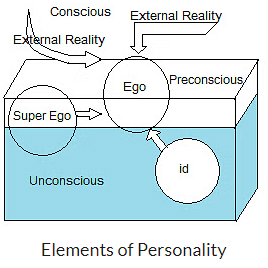
1. Id:
- It is the source of a person’s instinctual energy.
- It deals with the immediate gratification of primitive needs, sexual desires, and aggressive impulses.
- It works on the pleasure principle, which assumes that people seek pleasure and try to avoid pain.
- Freud considered much of a person’s instinctual energy to be sexual and the rest as aggressive. Id does not care for moral values, society, or other individuals.
2. Ego:
- It grows out of id, and seeks to satisfy an individual’s instinctual needs in accordance with reality.
- It works by the reality principle and often directs the id towards more appropriate ways of behaving.
- The ego is patient and reasonable and works by the reality principle.
3. Superego:
- The best way to characterize the superego is to think of it as the moral branch of mental functioning.
- The superego tells the id and the ego whether the gratification in a particular instance is ethical.
- It helps control the id by internalizing the parental authority through the process of socialization.
Thus, in terms of individual functioning, Freud thought of the unconscious as being composed of three competing forces. In some people, the id is stronger than the superego; in others, it is the superego. The relative strength of the id, ego and superego determines each person’s stability.
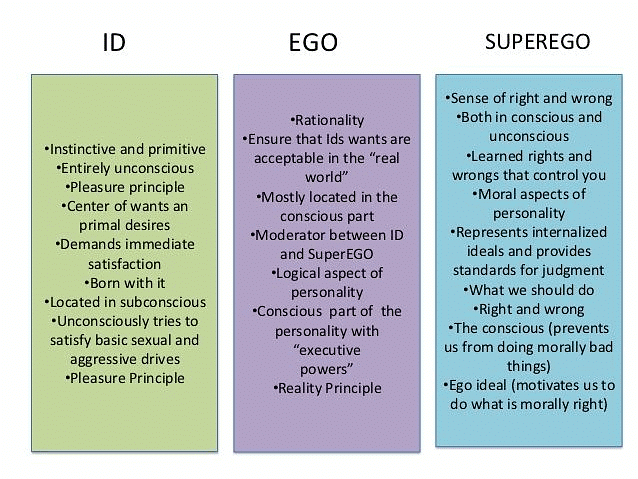 Freud also assumed that id is energized by two instinctual forces, called life instinct and the death instinct. He paid less attention to the death instinct and focused more on the life instinct. The instinctual life force that energizes the id is called libido. It works on the pleasure principle and seeks immediate gratification.
Freud also assumed that id is energized by two instinctual forces, called life instinct and the death instinct. He paid less attention to the death instinct and focused more on the life instinct. The instinctual life force that energizes the id is called libido. It works on the pleasure principle and seeks immediate gratification.
Q6: How would Horney’s explanation of depression be different from that of Alfred Adler?
Ans:
1. Horney’s Explanation of Depression
- Horney was another disciple of Freud who developed a theory that deviated from basic Freudian principles. She adopted a more optimistic view of human life with an emphasis on human growth and self-actualization.
- Horney’s major contribution lies in her challenge to Freud’s treatment of women as inferior.
- According to her, each sex has attributes to be admired by the other, and neither sex can be viewed as superior or inferior.
- She countered that women were more likely to be affected by social and cultural factors than by biological factors.
- She argued that psychological disorders were caused by disturbed interpersonal relationships during childhood.
- When parents’ behavior toward a child is indifferent, discouraging, and erratic, the child feels insecure, and a feeling called basic anxiety results.
- Deep resentment toward parents or basic hostility occurs due to this anxiety.
- By showing excessive dominance or indifference, or by providing too much or too little approval, parents can generate among children feelings of isolation and helplessness, which interfere with their healthy development.

2. Alfred Adler's Explanation of Depression
- Adler’s theory is known as individual psychology.
- His basic assumption is that human behavior is purposeful and goal-directed.
- Each one of us has the capacity to choose and create.
- Our personal goals are the sources of our motivation.
- The goals that provide us with security and help us in overcoming feelings of inadequacy are important in our personality development.
- In Adler’s view, every individual suffers from feelings of inadequacy and guilt, i.e. inferiority complex, which arise from childhood.
- Overcoming this complex is essential for optimal personality development.
Q7: What is the main proposition of humanistic approach to personality? What did Maslow mean by self-actualisation?
Ans: Carl Rogers and Abraham Maslow have particularly contributed to the development of humanistic perspective on personality.
The most important idea proposed by Rogers is that of a fully functioning person. He believes that fulfilment is the motivating force for personality development. People try to express their capabilities, potentials and talents to the fullest extent possible. There is an inborn tendency among persons that directs them to actualise their inherited nature. Rogers makes two basic assumptions about human behaviour. One is that behaviour is goal-directed and worthwhile. The second is that people (who are innately good) will almost always choose adaptive, self-actualising behaviour. Rogers views personality development as a continuous process. It involves learning to evaluate oneself and mastering the process of self-actualisation. He recognises the role of social influences in the development of self-concept. When social conditions are positive, the self-concept and self-esteem are high. In contrast, when the conditions are negative, the self-concept and self-esteem are low. People with high self-concept and self-esteem are generally flexible and open to new experiences, so that they can continue to grow and self-actualise.
Maslow has given a detailed account of psychologically healthy people in terms of their attainment of self-actualisation, a state in which people have reached their own fullest potential. Maslow had an optimistic and positive view of man who has the potentialities for love, joy and to do creative work. Human beings are considered free to shape their lives and to self-actualise. Self-actualisation becomes possible by analysing the motivations that govern our life. We know that biological, security, and belongingness needs (called survival needs) are commonly found among animals and human beings. Thus, an individual’s sole concern with the satisfaction of these needs reduces her/him to the level of animals. The real journey of human life begins with the pursuit of self-esteem and self-actualisation needs. The humanistic approach emphasises the significance of positive aspects of life.
Q8: Discuss the main observational methods used in personality assessment. What problems do we face in using these methods?
Ans: The main observational methods used in personality assessment are interview, observation, ratings, nomination, and situational tests.
(i) Interview: It is a commonly used method for assessing personality. This involves talking to the person being assessed and asking specific questions. Diagnostic interviewing generally involves in-depth interviewing which seeks to go beyond the replies given by the person. Interviews may be structured or unstructured depending on the purpose or goals of assessment.
In unstructured interviews, the interviewer seeks to develop an impression about a person by asking a number of questions. The way a person presents her/himself and answers the questions carries enough potential to reveal her/his personality.
The structured interviews address very specific questions and follow a set procedure. This is often done to make objective comparison of persons being interviewed. Use of rating scales may further enhance the objectivity of evaluations.
(ii) Observation: Observation of behaviour is another method which is very commonly used for the assessment of personality. Use of observation for personality assessment is a sophisticated procedure that cannot be carried out by untrained people. It requires careful training of the observer, and a fairly detailed guideline about analysis of behaviours in order to assess the personality of a given person.
For example, a clinical psychologist may like to observe her/his client’s interaction with family members and home visitors. With carefully designed observation, the clinical psychologist may gain considerable insight into a client’s personality.
(iii) Behavioural Ratings: These are frequently used for assessment of personality in educational and industrial settings. Behavioural ratings are generally taken from people who know the assessee intimately and have interacted with her/him over a period of time or have had a chance to observe her/him. They attempt to put individuals into certain categories in terms of their behavioural qualities. The categories may involve different numbers or descriptive terms. It has been found that use of numbers or general descriptive adjectives in rating scales always creates confusion for the rater. In order to use ratings effectively, the traits should be clearly defined in terms of carefully stated behavioural anchors.
(iv) Nomination: This method is often used in obtaining peer assessment. It can be used with persons who have been in long-term interaction and who know each other very well. In using nomination, each person is asked to choose one or more persons of the group with whom s/he would like to work, study, play or participate in any other activity. The person may also be asked to specify the reason for her/his choices.
(v) Situational Tests: A variety of situational tests have been devised for the assessment of personality. The most commonly used test of this kind is the situational stress test. It provides
us with information about how a person behaves under stressful situations. The test requires a person to perform a given task with other persons who are instructed to be non-cooperative and interfering. The test involves a kind of role playing. The person is instructed to play a role for which s/he is observed. A verbal report is also obtained on what s/he was asked to do. The situation may be realistic one, or it may be created through a video play.
Problems faced in using these methods:
Observation and interview methods are characterised by the following limitations:
(i) Professional training required for collection of useful data through these methods is quite demanding and time-consuming.
(ii) Maturity of the psychologist is a precondition for obtaining valid data through these techniques.
(iii) Mere presence of the observer may contaminate the results. As a stranger, the observer may influence the behaviour of the person being observed and thus not obtain good data.
Behavioural ratings suffers from the following major limitations:
(i) Raters often display certain biases that colour their judgments of different traits. For example, most of us are greatly influenced by a single favourable or unfavourable trait. This often forms the basis of a rater’s overall judgment of a person. This tendency is known as the halo effect.
(ii) Raters have a tendency to place individuals either in the middle of the scale (called middle category bias) by avoiding extreme positions, or in the extreme positions (called extreme response bias) by avoiding middle categories on the scale. These tendencies can be overcome by providing raters with appropriate training or by developing such scales in which the response bias is likely to be small.
Nominations received may be analysed to understand the personality and behavioural qualities of the person. This technique has been found to be highly dependable, although it may also be affected by personal biases.
Q9: What is meant by structured personality tests? Which are the two most widely used structured personality tests?
Ans: Self-report measures is fairly structured personality test. This was used by Allport who suggested that the best method to assess a person is by asking her/him about herself/himself. This led to the use of self-report measures. These are fairly structured measures, often based on theory, that require subjects to give verbal responses using some kind of rating scale. The method requires the subject to objectively report her/his own feelings with respect to various items. The responses are accepted at their face value. They are scored in quantitative terms and interpreted on the basis of norms developed for the test.
The two most widely used structured personality tests are:
(i) The Minnesota Multiphasic Personality Inventory (MMPI): This inventory is widely used as a test in personality assessment. Hathaway and McKinley developed this test as a helping tool for psychiatric diagnosis, but the test has been found very effective in identifying varieties of psychopathology. Its revised version is available as MMPI-2. It consists of 567 statements. The subject has to judge each statement as ‘true’ or ‘false’ for her/him. The test is divided into 10 subscales, which seek to diagnose hypochondriasis, depression, hysteria, psychopathic deviate, masculinity-femininity, paranoia, psychasthenia, schizophrenia, mania and social introversion. In India, Mallick and Joshi have developed the Jodhpur Multiphasic Personality Inventory (JMPI) along the lines of MMPI.
(ii) Eysenck Personality Questionnaire (EPQ): Developed by Eysenck this test initially assessed two dimensions of personality, called introverted-extraverted and emotionally stable-emotionally unstable. These dimensions are characterised by 32 personality traits. Later on, Eysenck added a third dimension, called psychoticism. It is linked to psychopathology that represents a lack of feeling for others, a tough manner of interacting with people, and a tendency to defy social conventions. A person scoring high on this dimension tends to be hostile, egocentric, and antisocial. This test is also widely used.
Q10: Explain how projective techniques assess personality. Which projective tests of personality are widely used by psychologists?
Ans: Projective techniques is indirect method of assessment of personality. This provides us with a real picture of an individual’s personality using indirect method.
Projective techniques were developed to assess unconscious motives and feelings. These techniques are based on the assumption that a less structured or unstructured stimulus or situation will allow the individual to project her/his feelings, desires and needs on to that situation. These projections are interpreted by experts. A variety of projective techniques have been developed; they use various kinds of stimulus materials and situations for assessing personality. Some of them require reporting associations with stimuli (e.g., words, inkblots), some involve story writing around pictures, some require sentence completions, some require expression through drawings, and some require choice of stimuli from a large set of stimuli.
The projective tests of personality which are widely used by psychologists are:
(i) The Rorschach Inkblot Test: This test was developed by Hermann Rorschach. The test consists of 10 inkblots. Five of them are in black and white, two with some red ink, and the remaining three in some pastel colours. The blots are symmetrical in design with a specific shape or form. Each blot is printed in the centre of a white cardboard of about 7”?10” size. The blots were originally made by dropping ink on a piece of paper and then folding the paper in half (hence called inkblot test). The cards are administered individually in two phases. In the first phase, called performance proper, the subjects are shown the cards and are asked to tell what they see in each of them. In the second phase, called inquiry, a detailed report of the response is prepared by asking the subject to tell where, how, and on what basis was a particular response made. Fine judgment is necessary to place the subject’s
responses in a meaningful context. The use and interpretation of this test requires extensive training. Computer techniques too have been developed for analysis of data.
(ii) The Thematic Apperception Test (TAT): This test was developed by Morgan and Murray. It is a little more structured than the Inkblot test. The test consists of 30 black and white picture cards and one blank card. Each picture card depicts one or more people in a variety of situations. Each picture is printed on a card. Some cards are used with adult males or females. Others are used with boys or girls. Still others are used in some combinations. Twenty cards are appropriate for a subject, although a lesser number of cards (even five) have also been successfully used. The cards are presented one at a time. The subject is asked to tell a story describing the situation presented in the picture.
(iii) Sentence Completion Test: This test makes use of a number of incomplete sentences. The starting part of the sentence is first presented and the subject has to provide an ending to the sentence. It is held that the type of endings used by the subjects reflect their attitudes, motivation and conflicts. The test provides subjects with several opportunities to reveal their underlying unconscious motivations. A few sample items of a sentence completion test are given below.
1. My father __________________
2. My greatest fear is_______________.
3. The best thing about my mother is ____________________.
4. I am proud of ____________________.
Q11: Arihant wants to become a singer even though he belongs to a family of doctors. Though his family members claim to love him but strongly disapprove his choice of career. Using Carl Rogers’ terminology, describe the attitudes shown by Arihant’s family.
Ans: According to Carl Rogers’ terminology, People try to express their capabilities, potentials and talents to the fullest extent possible. There is an inborn tendency among persons that directs them to actualise their inherited nature. He made two assumptions about human behaviour. One is that behaviour is goal-directed and worthwhile. The second is that people (who are innately good) will almost always choose adaptive, self-actualising behaviour. He noted that self was an important element in the experience of his clients. Thus, his theory is structured around the concept of self. The theory assumes that people are constantly engaged in the process of actualising their true self. He recognises the role of social influences in the development of self-concept. When social conditions are positive, the self-concept and self-esteem are high. In contrast, when the conditions are negative, the self-concept and self-esteem are low.
Thus, Arihant family will disapprove his choice of career as they want to be a doctor to satisfy the self concept. Arihant's family will want him to pursue the career of their inherited nature and will become stubborn about it even though they love him. They will try their best to stop him from choosing the career of singer which is not in their inheritence
FAQs on NCERT Solutions for Class 12 Psychology - (Part -1) - Self and Personality
| 1. What is the concept of self in the study of humanities and arts? |  |
| 2. How does personality develop according to the study of humanities and arts? |  |
| 3. What role does self-reflection play in understanding one's personality in humanities and arts? |  |
| 4. How does the study of self and personality contribute to personal growth and well-being? |  |
| 5. Can self and personality be influenced by external factors according to the study of humanities and arts? |  |

